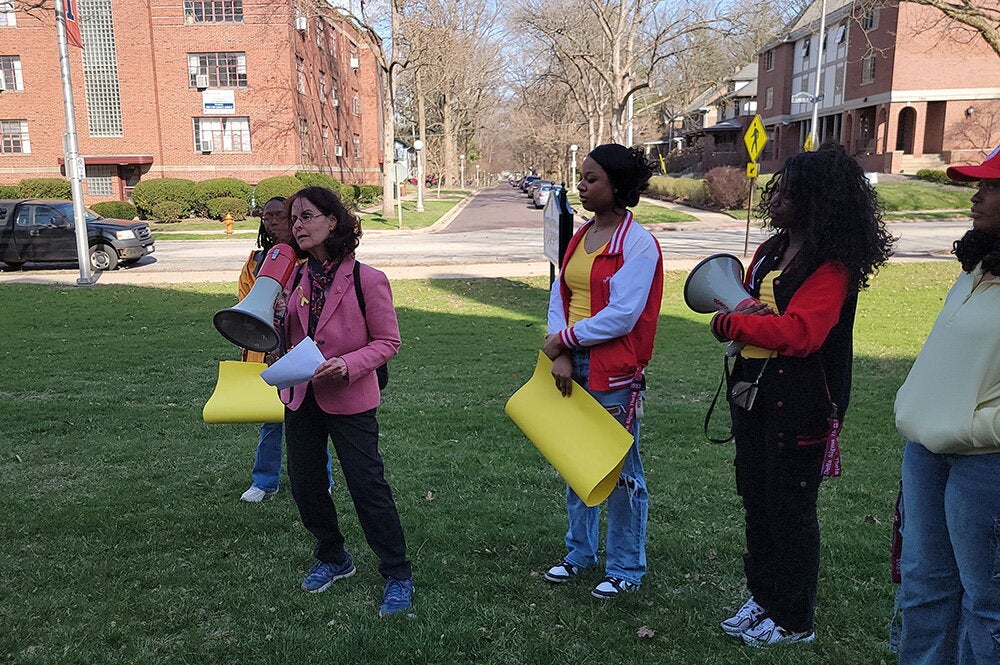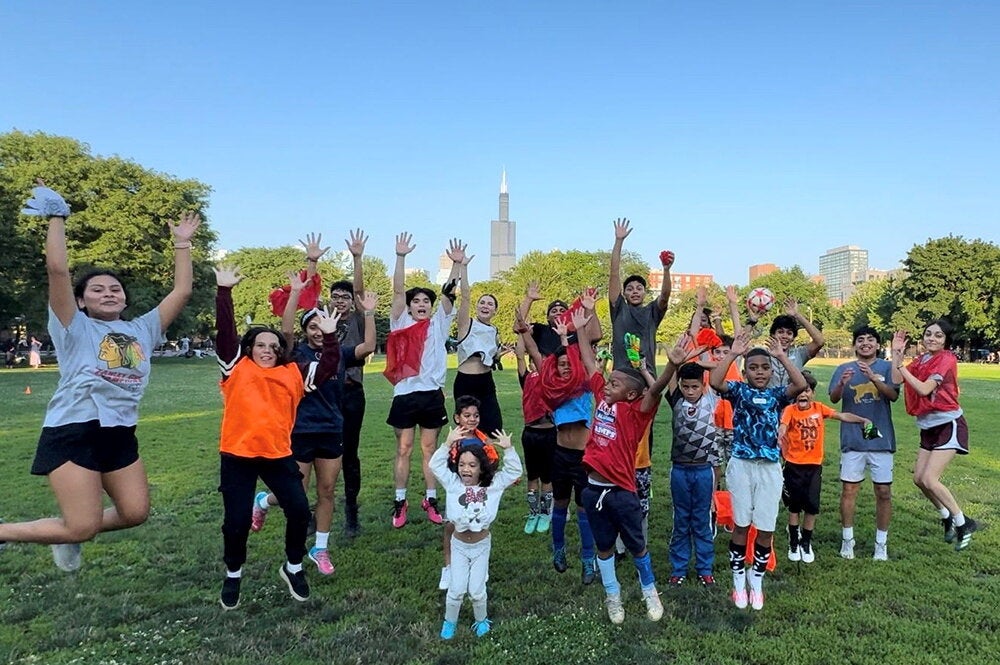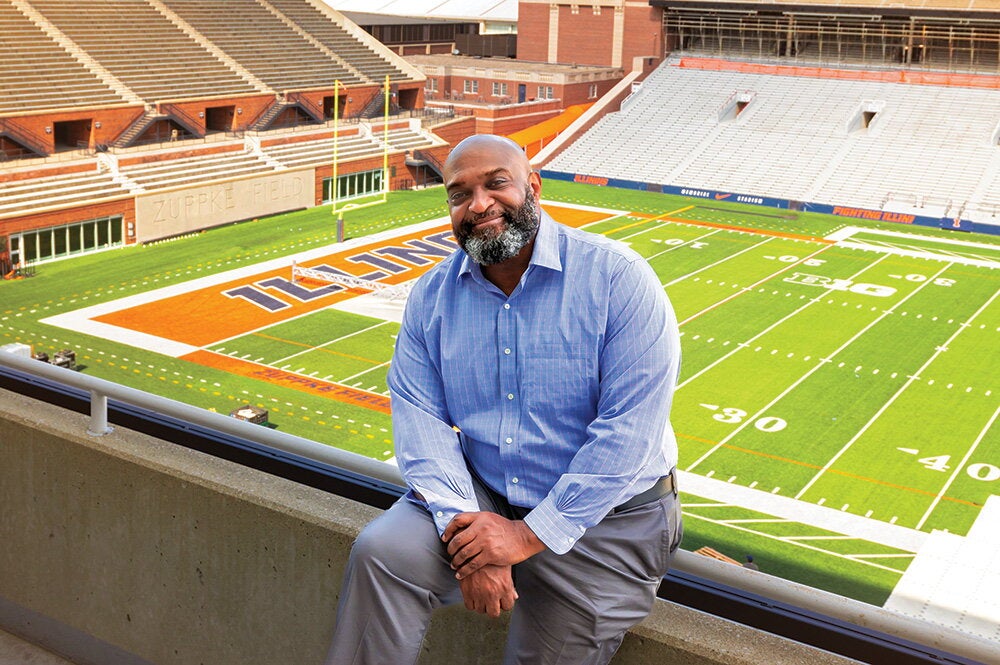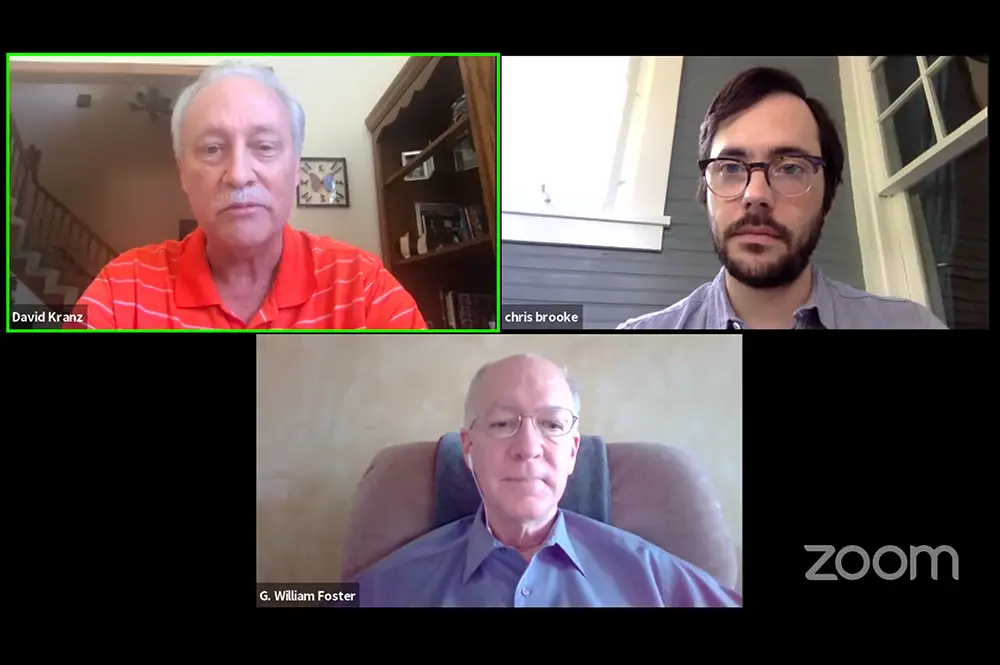
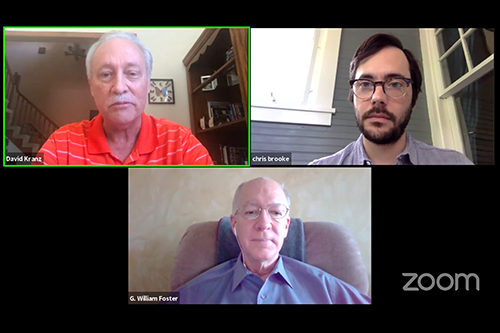
Where did COVID-19 come from? Why is testing so complicated? What is antibody testing—and what do we know about immunity from survivors of the Spanish flu who still had antibodies to the virus almost 90 years after the pandemic? A pair of scientists from the School of Molecular and Cellular Biology recently addressed some of the fundamental questions about coronavirus in an online Q&A video with U.S. Rep. Bill Foster, of Illinois.
Foster spoke with David Kranz, the Phillip A. Sharp Professor in the Department of Biochemistry and an expert in immunology, and Chris Brooke, professor in the Department of Microbiology and expert in viruses and how they spread, in a Science Saturday discussion on Facebook Live. You can view the video here.
“It's often said that our country has never faced a crisis like this, but there have been times when pandemics like the flu pandemic of 1917 really tore this country apart. The difference now is we have science to the extent that we did not back then. And that is the source of real hope for coming out of this in the best possible shape,” Foster said.
Brooke elaborated on the search for a vaccine for COVID-19, including:
- A basic explanation of COVID-19 and how it originated;
- Explanations of the steps necessary to test a patient for the virus, including sample collection, sample storage, RNA extraction, and virus detection, and why testing has been slow to develop;
- The Moderna and National Institutes of Health (NIH) coronavirus vaccine trials, which have already gone into their second phase. An outlook of 12-18 months for the vaccine to be released depends on everything working virtually perfectly, Brooke said. The previous record for developing a vaccine was four years.
Kranz discussed COVID-19 structure and antibody tests, including:
- The purpose and benefits of antibody tests—different than virus testing—which detect who has been contracted COVID-19 after a minimum amount of time, typically a couple of weeks after infection. Recent tests out of China and the University of Washington have shown that 100 percent of people who had COVID-19 had antibodies within three weeks.
- How antibodies prevent the virus from spreading in the body, and their duration, or immunity. One study from about 10 years ago showed that people who had survived the 1918 Spanish flu pandemic still had antibodies against the virus in their system;
- The frequency of positive COVID-19 antibody tests from various recent studies, including 2 percent of a sample of residents in Boise, Idaho; 0.7 percent of Major League Baseball employees; and 20 percent of sampled residents in New York City.
- His laboratory’s efforts to establish an antibody test.
